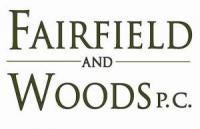Green, green and more green. The color of sustainability, a color of nature and, of course, the color of money. Green frenzy has permeated most every sector of business, including real estate. The greening of buildings has been occurring since the 1970s, when building owners began to realize that more efficient building systems and upgrades translated into lower costs and higher revenues.
Buildings in the United States are responsible for the production of millions of metric tons of greenhouse gas emissions annually. Carbon dioxide (CO²), a greenhouse gas, is the primary global warming gas. Energy consumption in a building represents more than 25 percent of its operating expenses. A building implementing environmentally sound practices can substantially reduce its emissions and cut operating costs. These lower operating costs can make a project more competitive for leasing and sale and also increase an owner’s return on its investment.
Green retrofitting of existing buildings makes sound economic and environmental sense. There are many standards today attempting to define what makes a building green. The most widely recognized is LEED certification offered by the U.S. Green Building Council. The greenness of a building is measured in points awarded for implementation of sustainable construction, design and systems. LEED certification is available not only to new construction but also to existing buildings (EB) and commercial interiors (CI).
The Denver Place Towers Complex, a retrofitted 25-year-old office building, has earned a LEED-EB Gold certification by using infrared faucets for water conservation, green housekeeping, green purchasing policies and establishing a reserved parking program for hybrid and alternative fuel vehicles. The upgrades paid for themselves in just three years with help from Xcel Energy rebates. The building now saves its owners more than $300,000 per year in energy costs. Also in Denver, the Alliance Center, built in 1908, was retrofitted with dual-flush toilets and other devices that have reduced the building’s water consumption by 84 percent. Further, light sensors and other energy reducing features have reduced electrical consumption by more than 50 percent. The Alliance Center is certified LEED-EB Gold and LEED-CI Silver.
Elsewhere in the state, Colo-rado State University has mandated that all new CSU construction be built to nationally accepted LEED Gold standards. CSU’s new residence hall complex features low-flow water fixtures to conserve water use and is landscaped with low-water, native plants. Also, the new dining hall contains a pulper, combining and compacting water and food waste, and then recirculating the water for conservation. CSU is dedicated to making not only its new facilities sustainable, but also its existing buildings. For example, one of CSU’s oldest buildings features energy-saving light fixtures, display boards with recycled fibers, waterless urinals and nontoxic paints. The University of Colorado has expanded and renovated its student union bookstore, offices and conference rooms. The renovation included the use of sustainable materials such as bamboo flooring and energy efficient techniques such as daylighting and above-average insulation to earn a LEED-EB Silver certification.
While LEED certification is the widely recognized standard of green building principles, building owners can go green without pursuing LEED certification. An owner can choose among a menu of green building options, each varying widely in price, effort and benefit. These options range from installing compact fluorescent light bulbs, using low volatile organic compounds materials, sealing pipe and air leaks, and window glazing, to installing solar (photovoltaic systems). Solar PV systems for small business typically cost from $10,000 to $35,000.
Government and private funds are available to assist a building owner with the cost of green upgrades. The Federal Energy Policy Act provides a 30 percent federal tax credit for solar water heating and PV systems installed on businesses until Dec. 31. A tax deduction of up to $1.80 per square foot is available to owners or designers of new or existing commercial buildings saving at least 50 percent of the heating and cooling energy meeting ASHRAE Standard 90.1-2001.
Partial deductions of up to 60 cents per sf are available for measures affecting any of the building envelope, lighting, or heating and cooling systems. These deductions are available for systems “placed in service” from Jan. 1, 2006, through Dec. 31, 2008. There also is accelerated depreciation on solar equipment through the modified acceleration cost recovery system. Municipal sales and use tax rebates also may be available to business owners who install renewable energy systems.
In 2004, Colorado voters approved Amendment 37, which requires Colorado’s investor-owned utilities, including Xcel Energy, to generate or purchase enough renewable energy to supply 20 percent of their retail electricity sales in Colorado by 2020. Under the initiative, utilities offer customers a minimum rebate of $2 per watt of installed PV capacity. Of the electricity generated each year from eligible renewables, at least 4 percent must come from solar-electric technologies and at least one-half of the solar requirement must be generated by systems located at customers' facilities. Xcel has implemented the Solar Rewards Program to comply with Amendment 37. The program provides a rebate and payment incentive for small (grid-connected PV systems ranging from 0.5 kilowatts (kW) to 10 kW-DC) and medium-sized customers (10 kW to 100 kW).
The time is ripe to implement green changes in existing buildings whether through a formal LEED certification or through individual modifications. Society has embraced these high-performance buildings, the government has incentivized the retrofitting and the market justifies it through a recoupment of costs.



 />i
/>i

